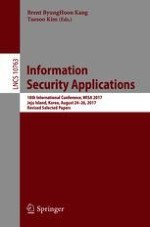2018 | OriginalPaper | Buchkapitel
The Digits Hidden in the Virtual World: Approximate Estimation Applying Capture and Recapture
verfasst von : Da Mi Hwang, In Seok Kim
Erschienen in: Information Security Applications
Aktivieren Sie unsere intelligente Suche, um passende Fachinhalte oder Patente zu finden.
Wählen Sie Textabschnitte aus um mit Künstlicher Intelligenz passenden Patente zu finden. powered by
Markieren Sie Textabschnitte, um KI-gestützt weitere passende Inhalte zu finden. powered by
